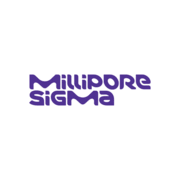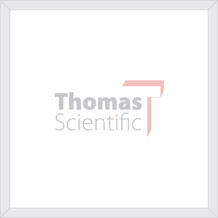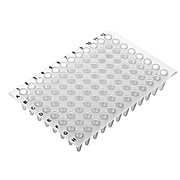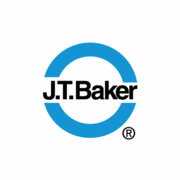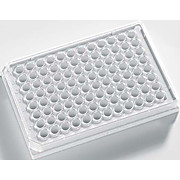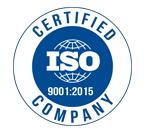96-Well Cell Culture Plates
Suitable for various lab applications, 96-well cell culture plates can assist with cloning experiments, sample incubations, and tissue culture-based analytical systems. Plate sealers and tissue culture plates ensure flexibility, reliability, and reproducibility across every stage of cell culture. Available with various surfaces and formats, our range offers suitability to match different needs within cell attachments and growth. Plates for cell culture promote healthy cells and reproducible results. Some tissue culture plates offer excellent stackability, and radiation is sterilized to ensure smooth application. Glass bottom well plates provide convenient live cell viewing without the need to transfer, assist with accurate results, and have a great level of flatness. Our cell culture dishes and plates are available in a number of sizes, including: 12.8 cm x 8.6 cm, 23 cm x 10 cm x 14 cm, 23 cm x 51 cm x 14 cm, 25 cm x 51 cm x 14 cm.
-
96-Well Deep-Well Plates 1.0mL
Bellco Glass96 deep well plates are designed with a tapered bottom to allow for easy pipetting and optimum volume. 96 deep well plates are available in both transparent polystyrene and clarified polypropylene co-polymer. They can be used with 8-channel and 12-channel pipetters and are useful for specimen…
-
Labcon PurePlus® Polymerase Chain Reaction (PCR) consumables are made without additives so you don't need to wonder what is different about the plates, tubes, or strips you are using from one day to the next. Many of our plates are printed with black alpha numeric reference grids to make it…
-
-
-
Rectangular TLC developing tanks
MilliporeSigmaTLC developing tanks are used to run TLC plates for separation. It is important to maintain saturated conditions during the analysis which can be achieved by using small tanks, filter paper liners and sufficient solvents. The tank can be equilibrated for 30 mins prior to running the plate to yield…
-
 Globe Scientific PCR Plates
Globe Scientific
Globe Scientific PCR Plates
Globe ScientificGlobe Scientific PCR Plates are offered in a variety of formats including no skirt, half skirt, and full skirt variants in 0.1mL (low profile) and 0.2mL volumes. Available 384 well variants round out this expansive offering. Globe offers a PCR plate compatible for most comercially available PCR and…
-
 Falcon® Plates
Corning
Falcon® Plates
CorningVersatility of plate colors to suit various detection methods Crystal-grade virgin polystyreneSterilized by gamma irradiation NonpyrogenicNon-treated polystyrene, standard tissue culture (TC), and Corning® Primaria™ surface treatments available Convenient, peel-open medical-style…
-
WHEATON® MicroLiter µLplate® Kits (with Pre-Cut FEP/Silicone Septa) ship with inserts installed in a microplate and caps in separate packaging. If you don't use large numbers of microplates or you want access to certain wells for further work, this package configuration works…
-
WHEATON® MicroLiter µLplate® Kits (with Pre-Cut FEP/Silicone Septa) ship with inserts installed in a microplate and caps in separate packaging. If you don't use large numbers of microplates or you want access to certain wells for further work, this package configuration works…
-
Trough Reservoir
Innovative Laboratory Products23A00U192: Full volume 12 trough reservoir. Our 290mL single well reservoirs with 12 V-bottom troughs, offer full volume in an automation friendly design. Sturdy and warp resistant, ultra-flat and rigid construction, with a stable base, this reservoir is ideal for manual or automated applications.…
-
Round well design with a clear flat bottom2.8 mm distance between well bottoms and plate bottom50µL total well volume, with recommended working volume of 5-40µLHigh base plate design is compatible with automation and for bar codingValidated by Molecular Devices for the FLIPR reader. Outer wells…
-
Corning® Well Microplate
CorningThe Corning® well microplate is specially designed for immobilizing large molecules like antibodies that have large hydrophobic regions. These non-sterile microplates feature high quality construction.
-
WHEATON® MicroLiter Plate Sampling System™ Convenience Kits (with Pre-Cut FEP or PTFE/Silicone Septa) ship with inserts installed in a microplate and a detached µLmat.
-
 PurePlus® 96 Well PCR Plates
Labcon
PurePlus® 96 Well PCR Plates
LabconLabcon PurePlus® Polymerase Chain Reaction (PCR) consumables are made without additives so you don't need to wonder what is different about the plates, tubes, or strips you are using from one day to the next. Many of our plates are printed with black alpha numeric reference grids to make it…
-
Silica Gel G UNIPLATES
Miles Scientific (Analtech)Silica Gel G & GF UNIPLATES are the most widely used silica gel TLC plates. No organic substances are added to these products, thus making them compatible with sulfuric acid charring visualization.These plates are commonly scraped from the glass backing to isolate separated components for other…
-
 Polypropylene 384 Well Plates
Thermo Scientific Nunc
Polypropylene 384 Well Plates
Thermo Scientific Nunc4 times more wells than a 96 well plate for assay miniaturization and cost savings Same footprint as 96 well plate, compatible with robotics and automated equipment Rounded square design and round bottom minimizes wicking Efficient washing and maximum recovery of contents …
-
Baker-Flex'® Silica Gel Ib2-F 1 Pk
Avantor - J.T.Baker®Flexible TLC Sheet for laboratory, research or manufacturing use Baker-flex™ polyester-backed sheets can be easily cut to remove a section of the sheet when you need to isolate a sample component of particular interest. Sheet Size: 2.5 x 7.5 cm Sheets/Package: 200 …
-
96 Round Well Plates
Innovative Laboratory Products23A00U143: Our 7mm round well V-bottom plate combines optimized sample recovery with automation friendly design. Sturdy and warp resistant, with ultra-flat surfaces and rigid construction, this plate ideal for high throughput screening, sample collection, compound storage, screening, mixing, and…
-
Krystal™ glass bottom plates are manufactured for whole-plate CCD imaging and laser detection applications, Krystal glass bottom plates consist of a polystyrene upper part and a clear borosilicate glass sheet fixed to the base with a proprietary adhesive. This process results in consistent…
-
6 Well Macroplates
Greiner Bio-OneManufactured from crystal clear and heat-resistant polystyrene for optimal analysis by microscopy With 35 mm diameter per well, it is a practical and space-saving alternative to six standard petri dishes Numeric coding allows easier identification of the wells Volume/well: 16 ml With vents
-
Azenta products are intended for sale/shipment within the US , Canada, and Latin America only. All other International customers should contact their local Azenta distributor to place orders for Azenta products.
-
Rectangular Developing Tank
General Glass BlowingBeveled inside and outside to remove any sharp edges Raised ridge midway on the inside ends and bottom for developing two 20 x 20 cm plates or the equivalent Inside dimensions: 27 x 7 x 26 cm Supplied with flat glass lid, 30 x 10 x 3 cm Molded glass block of clear glass with…
-
BD BBL™ prepared tubed media enables the isolation and identification of microorganisms. Tubed media are ideal for cultures requiring prolonged incubation, since many can be incubated with tightly closed caps to prevent dehydration and subsequent inhibition of growth. Offering a wide variety of…
-
TLC Silica Gel 60 F254 with Concentrating Zone 20 x 2.5 cm
MilliporeSigmaThese plates allow users to quickly and easily apply any kind of sample, even large volumes of diluted samples. EMD Millipore concentrating zone plates are based on different adsorption properties of two adsorbents. The first is a large pore concentrating adsorbent where the samples are applied;…
-
XBLOK650 6w Deep Well Plates
ClickBioThe XBLOK650 is a polypropylene ANSI-SLAS footprint plate with 6 x 50 mL wells. The well shape is based on common 50 mL conical tubes. Ideal for large volume sample prep, tissue homogenization, or suspension cell culture workflows.







